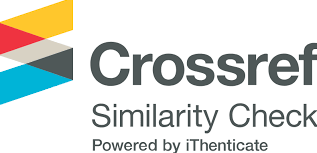Evaluation of genetic diversity of Eurycuma longifolia Jack in some natural populations in the South Central and Central Highlands Eurycuma longifolia Jack, a precious herb, has the effect of treatin
Keywords:
Eurycuma Longifolia Jack, genetic diversity, ISSRAbstract
Eurycuma longifolia Jack, a precious herb, has the effect of treating many
diseases such as enhancing physiological fuction, improving postpartum
depression, intestinal diseases, treating malaria, reducing headache and
abdominal pain, ect., so the human demand for this plant is great. Over
exploitation by people and threatened natural environment affected the
genetic diversity of Eurycuma longifolia Jack. In this research, 10 ISSR
primers were used to evaluate the genetic diversity of 94 samples that
collected in South Central and Central Highlands. The results showed that
there were 65 bands produced in which 50.18% were polymorphic. Genetic diversity was highest in Binh Thuan population (h = 0.248) and lowest in
Da Nang population (h = 0.058). Thirteen populations were classified into
5 main groups with genetic similarity coefficient ranged from 0.779 to
0.944 and genetic distance ranged from 0.058 to 0.248. Lam Dong and
Quang Nam populations have a longer genetic distance than the rest.
Overall, Eurycuma longifolia Jack had the high genetic diversity, therefore,
studies to conserve, exploit and develop this valuable genetic resource
should be conducted in the future.
References
1. Đỗ Tất Lợi, 2004. Những cây thuốc và vị thuốc Việt Nam. NXB Y học.
2. Doyle JJ. and Doyle JL., 1987. A rapid DNA isolation procedure for small quantities of fresh leaf tissue. Phytochem. Bull. 19: 11 - 15.
3. Hoàng Đăng Hiếu, Chu Thị Thu Hà, Phạm Bích Ngọc, Lâm Đại Nhân, Nguyễn Thị Thúy Hường, Chu Hoàng Hà, 2016. “Sử dụng chỉ thị ISSR trong việc đánh giá đa dạng di truyền ở quần thể Ba kích tại Quảng Ninh”, Tạp chí Sinh học, 38(1): 89 - 95.
4. Nei M. and Li WH., 1979. Mathematical model for studying genetic variation in terms of restriction endonucleases. Proc Natl Acad Sci. 76 (10): 5269 - 5273.
5. Samy J., Sugumaran M., Kate LW., 2005. Herbs of Malaysia. Times Editions. Trang 104 - 105.
6. Võ Văn Chi, 2012. Từ điển cây thuốc Việt Nam. Nhà xuất bản Y học.
7. White TL., Adams WT., Neale DB., 2007. Forest genetics. CABI Publishing, Cambridge, MA, USA.








